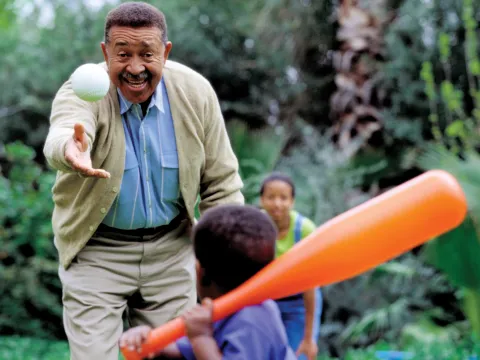- AdventHealth
The occasional skinned knee or bruised elbow is often just part of being a kid. But some common injuries — especially strains, sprains and shin splints — are a bit more serious. Fortunately, they’re mostly preventable.
They’re called “soft-tissue” injuries because they affect the muscles and tissues that connect muscles to bones as well as the bones to each other.
You’ll want to know what these injuries are, what causes them, how to react and, most importantly, how to prevent them.
Stretching, including warming up and cooling down, can increase flexibility, lowering the chance that a tissue will tear. Eating right, getting enough sleep and staying in shape are also important injury-prevention principles.
First, what’s the difference between some of these injuries?
A Sprain or a Strain?
These two injuries sound alike, and, while similar, they don’t mean the same thing. Both are stretches or tears, but the difference is where they happen.
A sprain is when the tissue connecting two bones, called a “ligament,” is stretched or torn. A common example is an ankle sprain, often caused by a hard twist to the foot that stretches the tissues connecting the bones of the foot and lower leg.
A child who has a sprain is likely to be in pain, with swelling and bruising coming later.
Sprains can range in seriousness from a light stretch to a total tear. Even the worst strain can heal properly with the correct medical care, though.
A strain is also a stretching or tearing of tissue, but it happens to a muscle or a tendon, which connects a muscle to a bone. The hamstring and lower back are some of the most common muscles or tendons to get a strain.
Its symptoms are similar: pain, limited motion, swelling, cramping and muscle weakness.
What Should I Do?
Most sprains and strains don’t need professional treatment. Instead, use the RICE method:
- Rest
- Ice
- Compression
- Elevation
However, you should see a doctor if any of the following happens:
- The pain or swelling are intense
- A joint is locked or unstable
- A joint can’t bear weight
- Pain in the neck or back
- Numbness or weakness down the arm or leg
- Changes in skin color
What Are Shin Splints?
Shin splints are almost always an overuse injury, meaning they’re caused by a repetitive activity. For children, they often form from frequent running or dancing. The pain is coming from the swollen and inflamed muscles and tissues around the front of the leg.
Kids who get pain in their shins should rest for two to four weeks. After that, they should return to their activity slowly.
An Ounce of Prevention
It may seem like a twisted ankle or overstretched back occurs by random accident, but most of these injuries are preventable. The American Academy of Pediatrics (AAP) recommends the following to prevent sports injuries:
- Be flexible. Stretching after games and practices can increase flexibility.
- Play safe. Rules against dangerous play, like checking in hockey, should be enforced.
- Don’t play through pain. Remember that kids may hesitate to tell their coach or parents if they’re hurting.
- Wear the right gear. Well-fitting protective equipment is a plus, but kids shouldn’t assume it will protect them from dangerous activities.
- Take breaks. Rest during games and practices can prevent heat illness and injury.
- Take time off. Kids should have at least one day a week off from sports.
It’s not exactly a sport, but the AAP also recommends that kids on a trampoline should jump one at a time. Three out of four trampoline injuries happen when more than one person is jumping at a time.
Finally, consider that the whole-person health benefits of good nutrition and proper rest can prevent injury, too. Research has found that young athletes who don’t get eight hours of rest are more likely to get injured.
Preventing and promptly treating sprains, strains and shin splints helps your child stay active. They get to keep enjoying the benefits of sports and you get to watch them doing what they love.
Injuries can happen even with the best preparation, so if your child needs immediate attention, AdventHealth’s urgent care centers and emergency departments offer convenient, on-demand care.
For a list of all of your options, check out our website.




